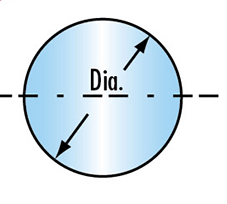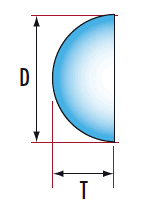Advantages and development prospects of combined tools
Another way to increase productivity is to minimize assist time. First, the process of decomposing complex parts into many processes and using many tools takes up a lot of tool change time and transfer time before and after the process. Reducing these times has practical implications for increasing productivity. One of the proven ways to replace a single standard tool with a versatile combination of tools is to properly select {TodayHot} and use the combination tool properly to achieve the desired result.
Combined tool form
To date, combination knives come in many forms. The common step drill is a simple combination tool, which is characterized by the completion of several processes in the same process in one pass. More complex combined tools are often integrated with several knives that can perform different processes, such as drill cutters that can be drilled and milled, usually with several passes or several knives in different positions. Cutting. This is the most typical combination of tools, covering a wide range of machining, from simple drilling to chamfering combined knives, to a combination of 5 to 10 knives. There is also a more complex combination of tools: the internal transmission of the transmission mechanism or the rotary shaft that produces the auxiliary cutting motion, both mechanical and mechatronic, can meet the requirements of the special parts of the machined parts, such tools on the machine structure or Machine control systems often have special requirements to control the moving parts of the tool.
Advantages of combined tools
The main advantage of combined tools is increased productivity. If a drill with 4 steps is used, the time to machine a piston hole is reduced by approximately 70%. In addition to saving tool change time, the user can benefit from the free machine tool magazine position and reduced tool chucks. The empty tool magazine position allows the spare tool to be replaced while the machine is working. Thanks to the reduced number of tools, tool management can be simplified and costs can be saved.
Regarding the problem of expensive combination tools, the compensation due to the reduction of tool holders and the saving of administrative costs should be taken into account in the calculation; therefore, the more standard knives that a special combination tool can replace, the earlier it should be adopted. In addition, in terms of processing quality, the application-specific combination tool also has {HotTag} benefit, so that the positioning accuracy of the machine tool is no longer so important. For example, a multi-step hole is processed in one pass, and the hole has different heart-degree error. It is also reduced because the front drill bit plays a centering role in the subsequent drilling. At the same time, the use of complex combined tools requires the operator of the machine to have the appropriate knowledge, so they should be trained.
To machine an empty sipe in the bore, a combination tool with control function can be used. Figure 8 shows the combination of holes and slots for the cast iron brake drum housing developed by Komet to ensure good concentricity between the two. It consists of a set of milling cutters and a slider. The first step is to ream the hole by the reamer, and then the whole tool continues to rotate in the hole. The slider is used to carry the radial grooving with two knives. The blade of the knife serves as a support. The premise of using this tool is that a special machine is required to operate the lever that drives the slider. In order to make this combination tool available on standard machine tools, Komet has introduced a mechatronically adjustable sliding element tool with a controllable motor inside the tool holder that drives a rotary shaft in the tool. Direct control of the movement of the skateboard.
As can be seen from the various combinations of tools described above, most of the combined tools are dedicated tools developed for a specific application, so the delivery time is long. In order to shorten the delivery time and ensure the quality of the products, Komet implemented an “Easy Specialization†project in 1996. With a CAD/CAM system, the combined tools for each specific workpiece can be simulated according to the data of the drawings. To date, 30% of Komet's combined tooling has been developed using this method, and the delivery time has dropped from an average of 8 to 10 weeks to just 3 weeks.
The development prospects of combined tools
The increasingly complex combined tool structure is currently recognized by users. In order to promote the development of the combined tools and expand the scope of use, tool manufacturers must consider the various problems that users may encounter while developing these tools, and seek solutions and measures, including the development of controllable tools with certain flexibility. Develop new coating technologies, tool materials and geometries. In order to reduce tool costs, even the production base of tools can be transferred to areas with low manufacturing costs.
However, flexible combined tools can only be promoted without the need to modify the machine or with the control system; the new combined tool will take into account each factor related to the processing efficiency, such as the base material, coating material, geometry, etc. Factors should be optimized for specific processing objects to form a comprehensive advantage. At the same time, the utilization of these advantages is improved due to the saving of the auxiliary time, and the effect of improving productivity is obtained. This trend of increasing the efficiency of cutting and reducing the auxiliary time will drive a wider range of applications.
N-BK7 Ball Lenses are glass spheres commonly used in fiber optic applications, ball lenses are ideal for focusing light into optical fibers, or for fiber coupling. Fused Silica features high transmission from 200nm to 2.2μm with a low coefficient of thermal expansion, making it ideal for the most demanding ball lens applications in the ultraviolet, visible, and near infrared spectra.
Ball lenses are commonly used for improving signal coupling between fibers, emitters, and detectors, as well as objective lenses in endoscopy and bar-code scanning applications. Half-ball lenses simplify handling and integration.


Ball Lens Half-Ball Lens
Specification of our ball lens:
*Material:BK7 or other optical glasses,optical crystal materials
*Diameter:1mm - 40mm
*Dimension Tolerance:+/-0.005mm
*Surface Quality:40-20
*Sphericity:0.005mm
*Coating:optional
Schott Bk7 Ball Lens,Bk7 Ball Lenses,Schott N-Bk7 Glass Ball Lens,Schott Bk7 Half Ball Lens
China Star Optics Technology Co.,Ltd. , https://www.realpoooptics.com